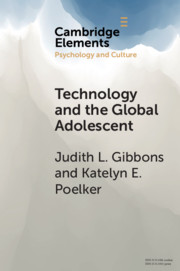Element contents
Technology and the Global Adolescent
Published online by Cambridge University Press: 24 March 2020
Summary
- Type
- Element
- Information
- Online ISBN: 9781108639538Publisher: Cambridge University PressPrint publication: 16 April 2020
References
- 12
- Cited by



